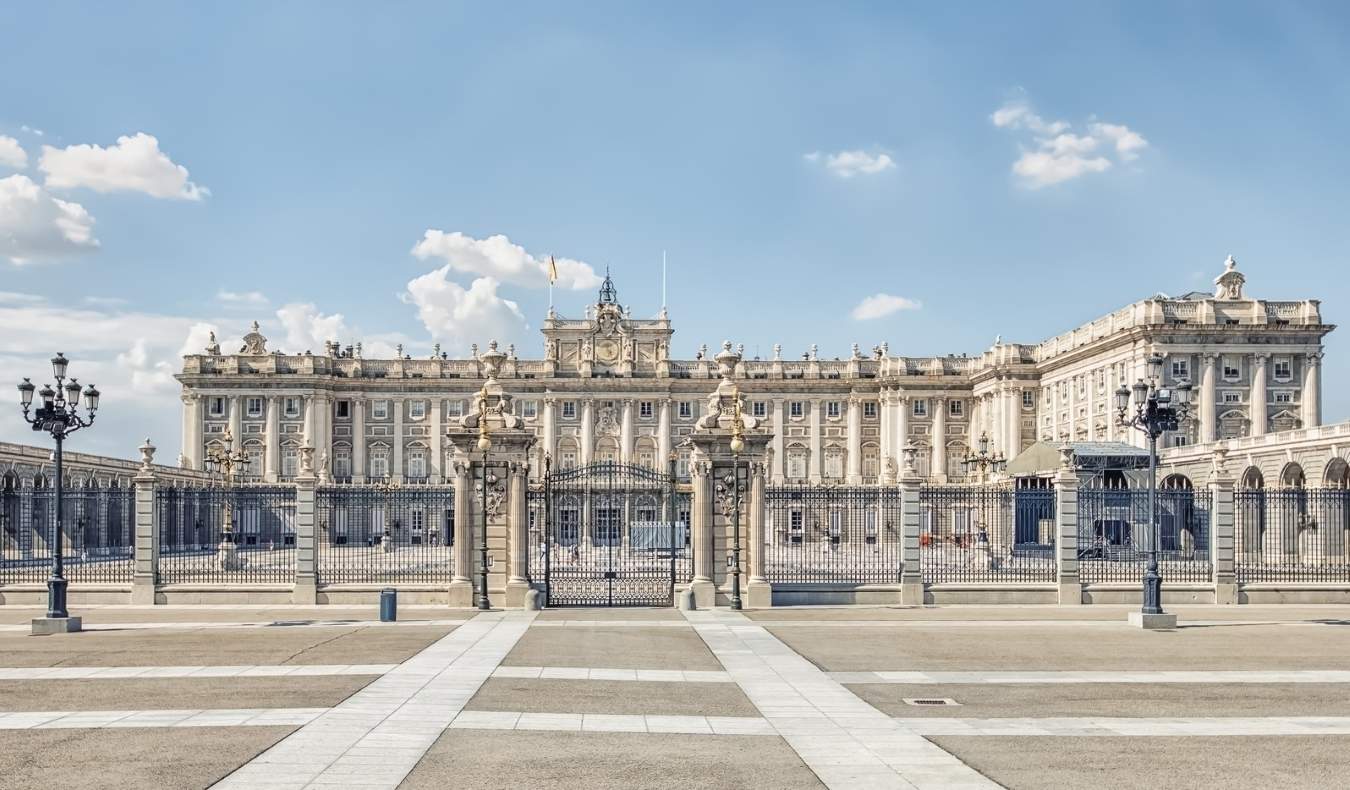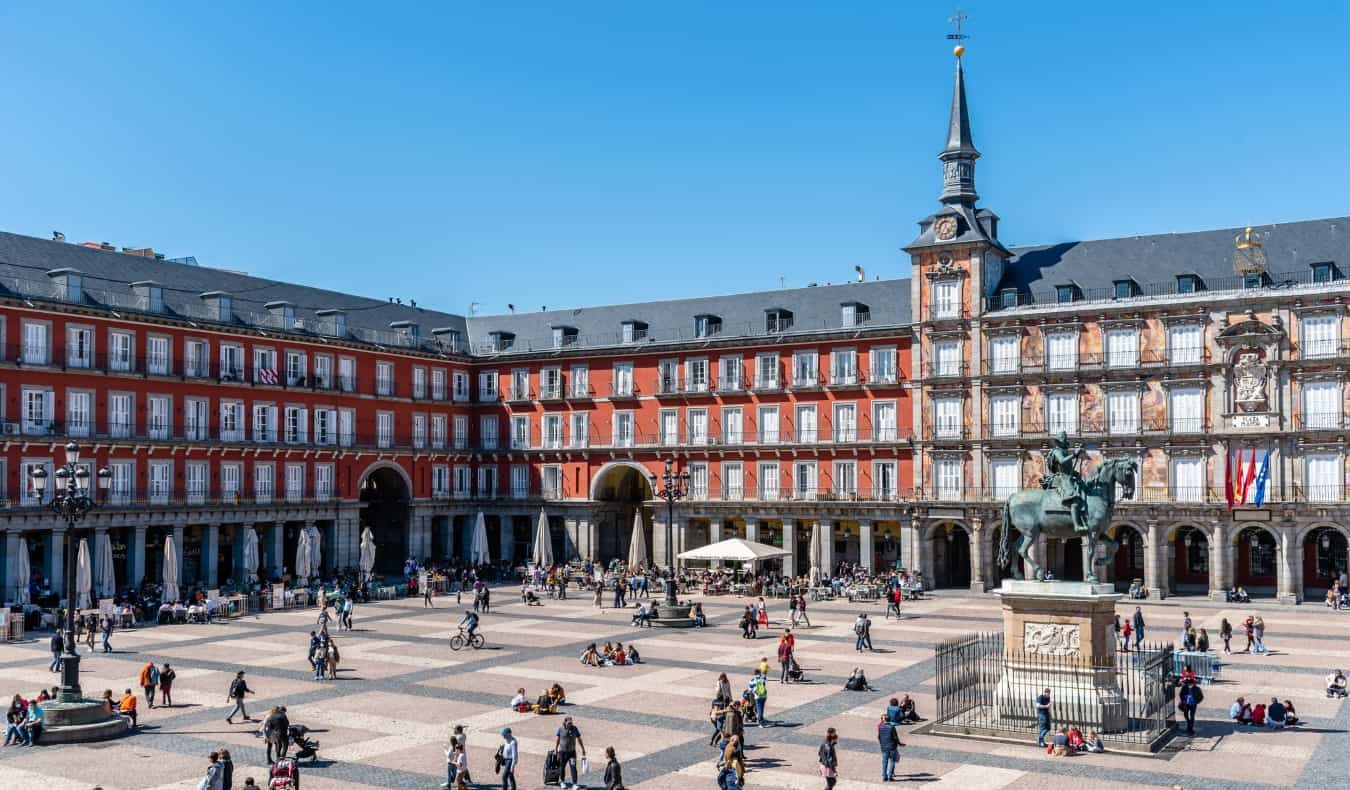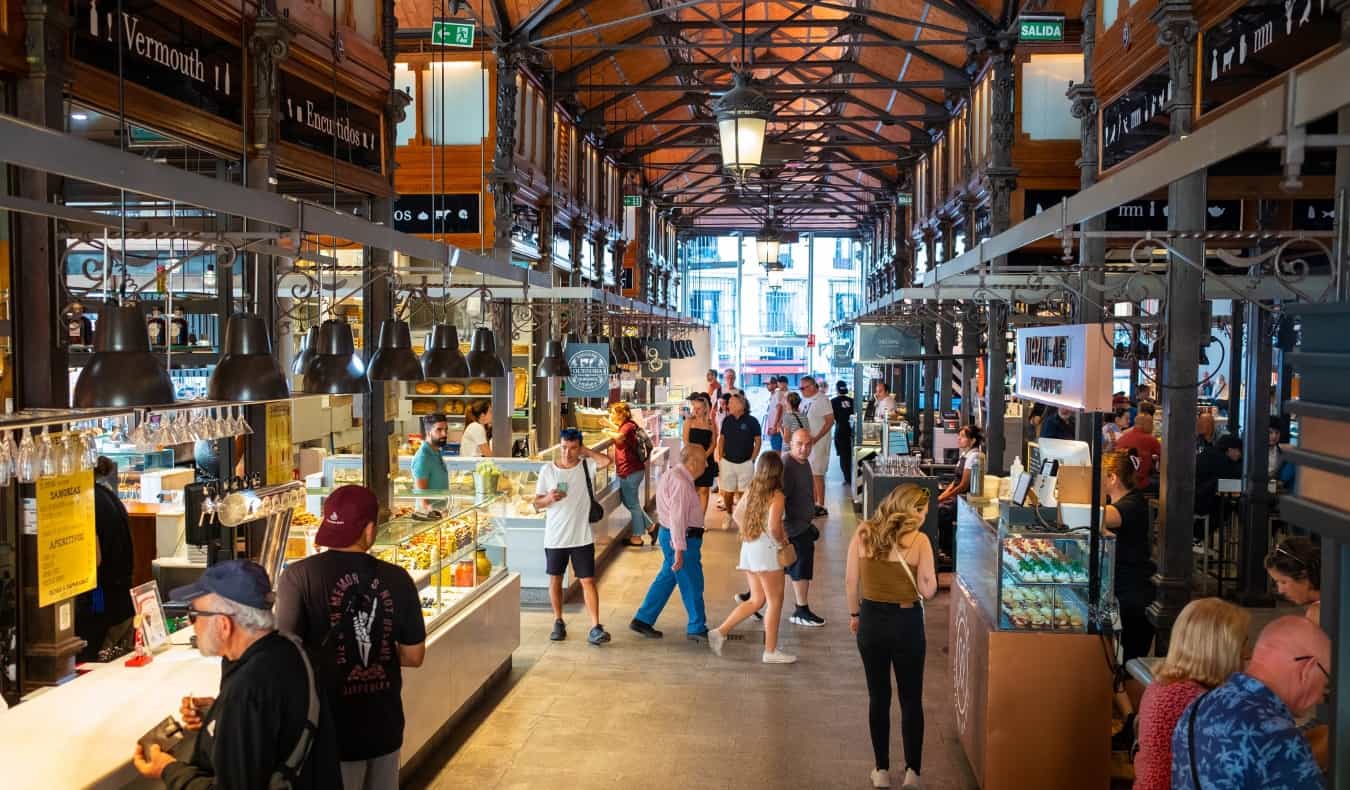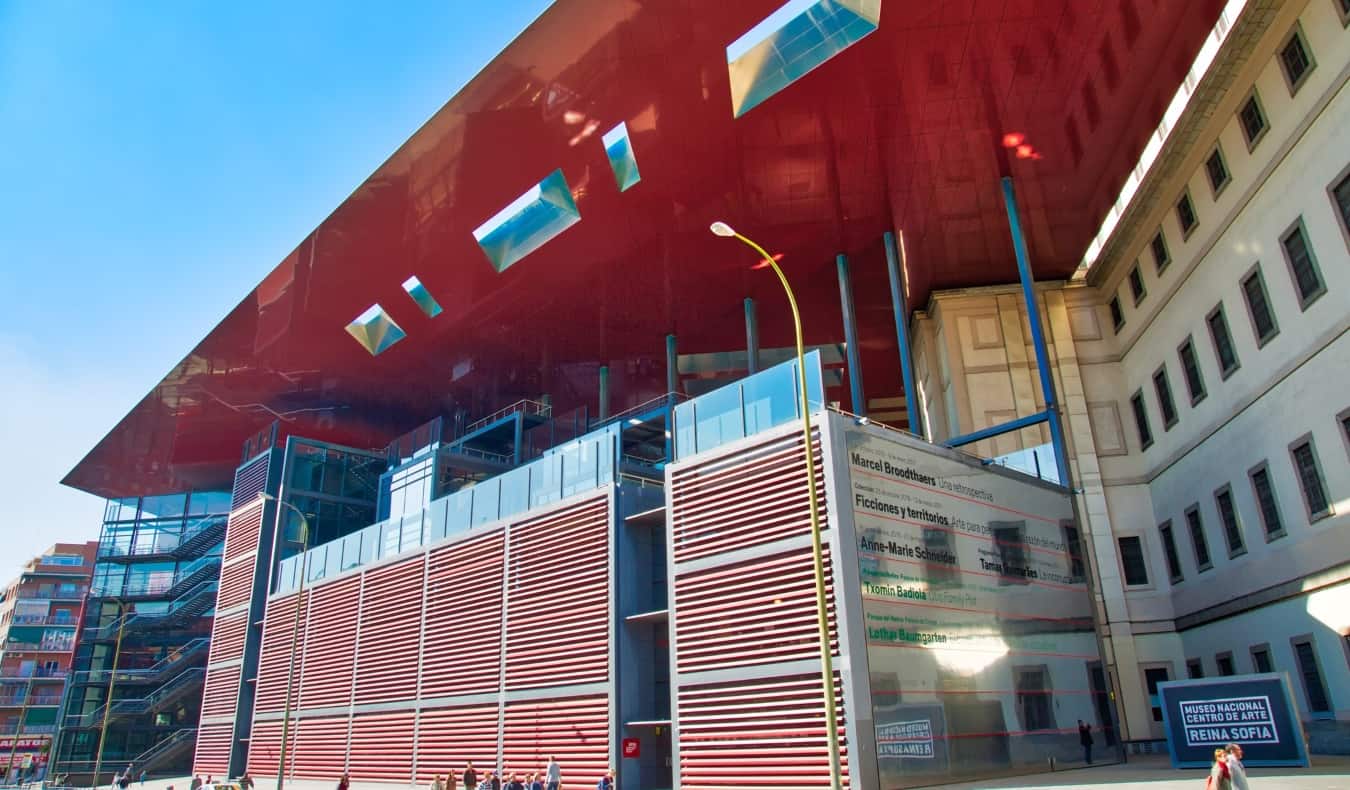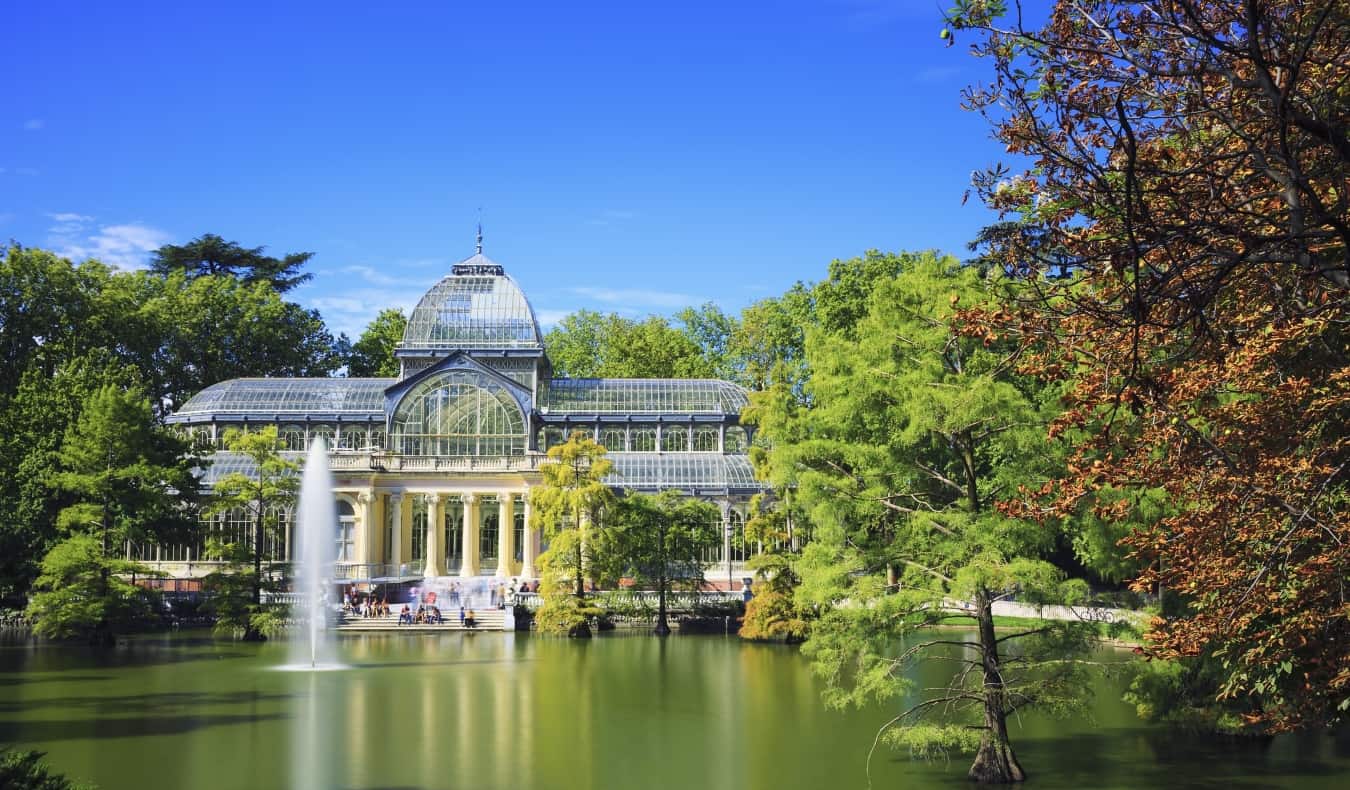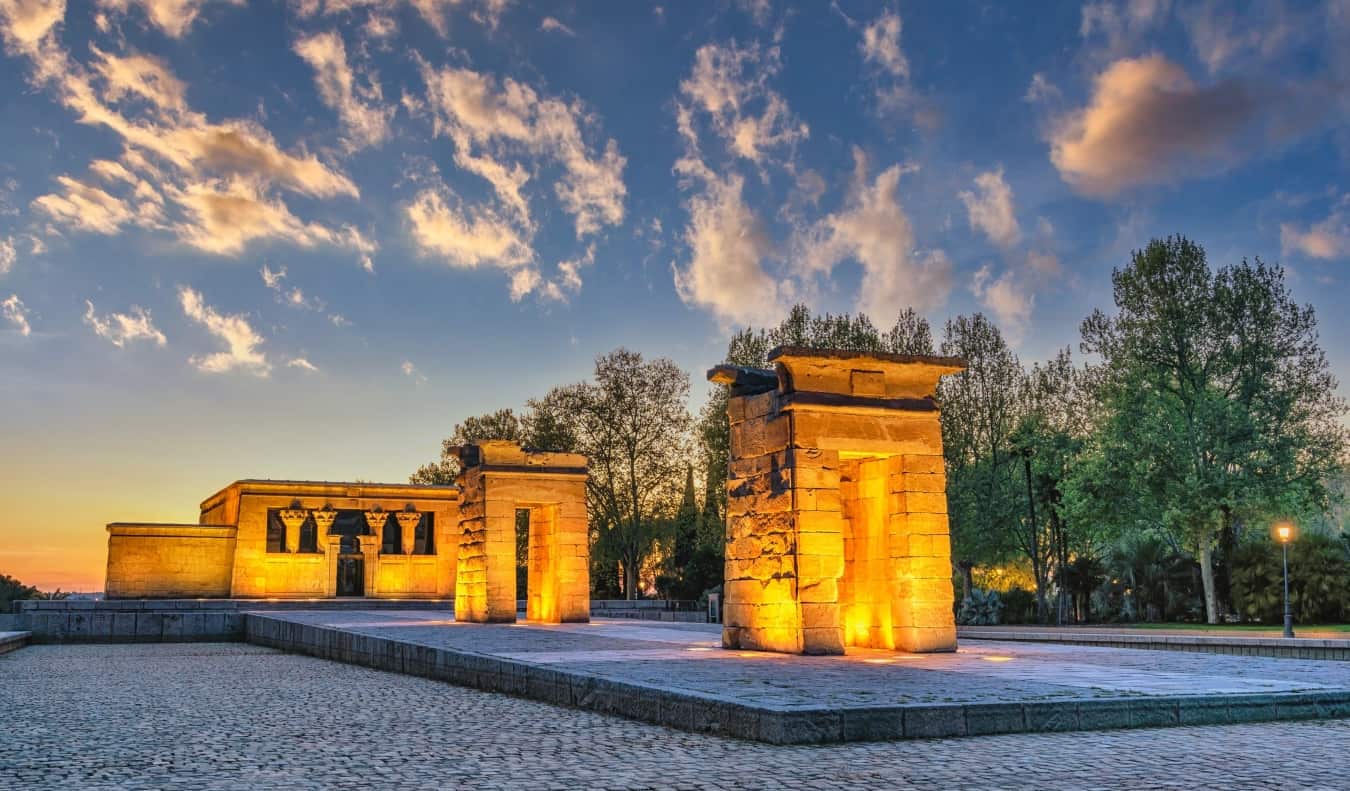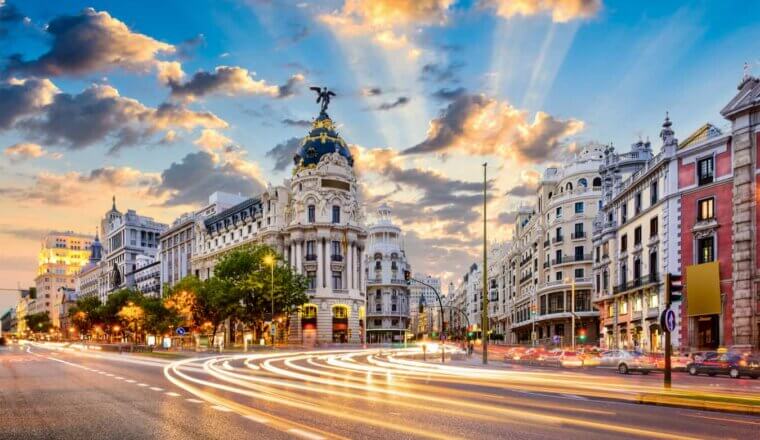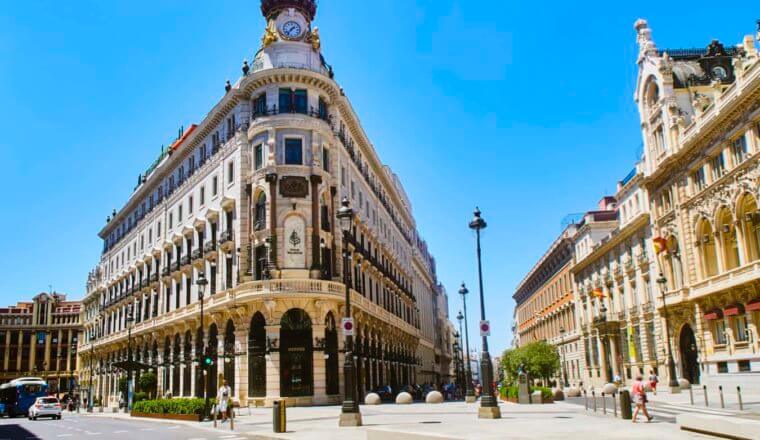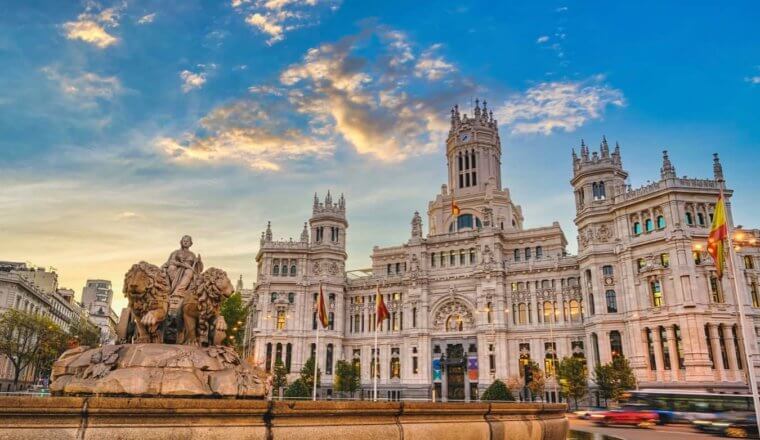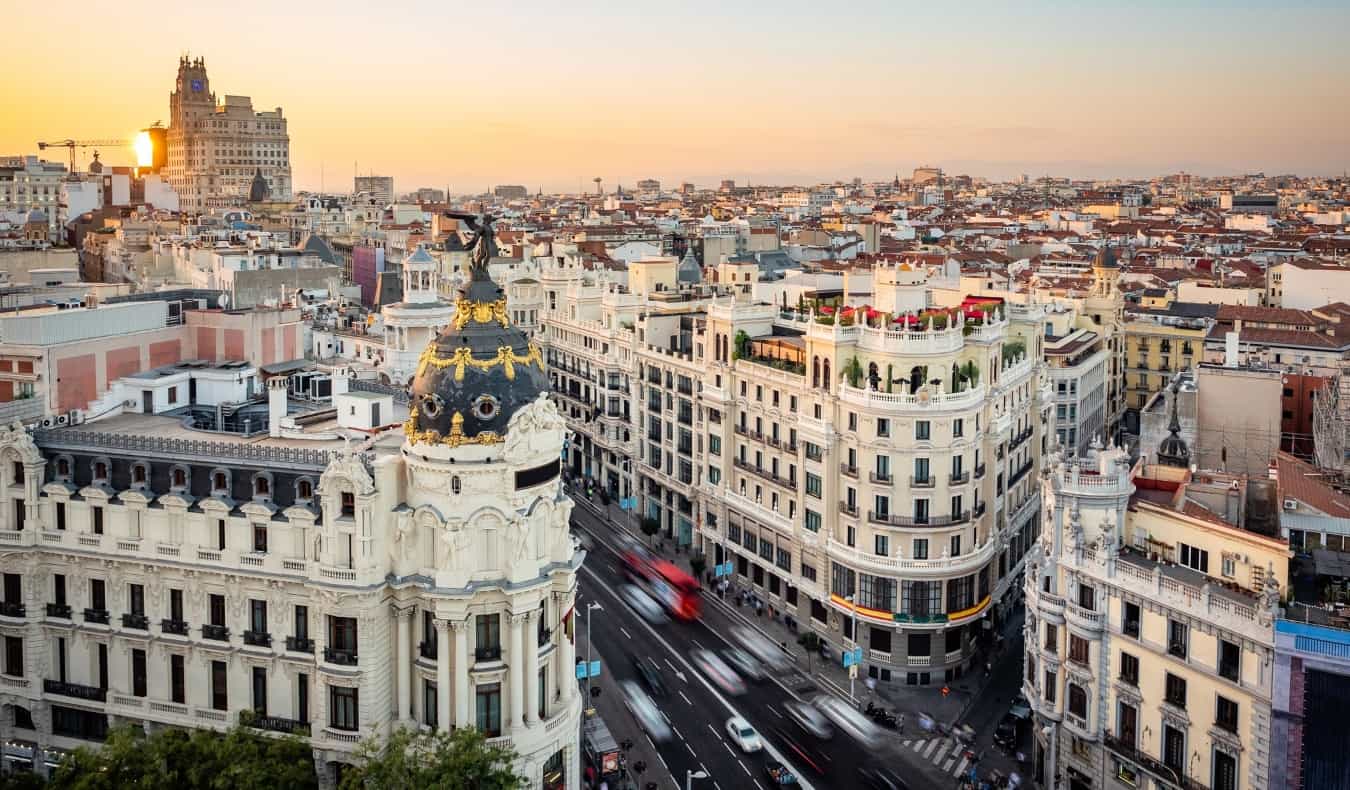
Last Updated: 1/11/24 | January 11th, 2024
Madrid is an energetic city known for its late nights, historic sites, and delicious cuisine. As the capital of Spain, there’s also a lot of history and art here, which you could spend weeks discovering. It’s also bursting with beautiful architecture. There’s an endless number of things to see and do in this lively metropolis.
The earliest mention of Madrid was in 865, when Emir Muhammad I commissioned the construction of an Arabic fortress in the village of Mayrit (meaning ‘plenty of waterways’), on the banks of the river Manzanares. However, the city didn’t gain prominence until the Middle Ages when it was conquered and invaded by various armies throughout the centuries (something that helped the city develop its cosmopolitan flair).
Today, Madrid is a vibrant international hub. I’ve been numerous times over the years, reveling in the winding alleys and charming restaurants and bars. The locals here start their nights late and party well into the morning (it’s definitely a night-owl city). It’s also a big city; with 3.4 million inhabitants, it is the third-largest city in Europe after London and Berlin.
To help you make the most of your time in this world-class city, here is my list of the best things to do in Madrid:
1. Take a Free Walking Tour
I love taking free walking tours. They’re a budget-friendly way to see the main sights, learn some history, and get a feel for the city. You also get access to a local guide who can answer all your questions and give you insider tips on where to go and what to do. Free Walking Tours Madrid and New Europe both offer comprehensive tours. Just make sure to tip your guide at the end!
For a more in-depth tour, Walks offers the best paid tours in the city. It’s my go-to walking tour company, because its tours are super detailed and insightful. Tours start from 48 EUR.
For even more walking tour recommendations, check out this post.
2. Visit the Royal Palace
The palace’s construction began in 1735, and it was home to Spain’s monarchs until the 1930s. Although it is still the official residence of the Spanish royal family (it is one of the few official seats of a Head of State that is open to the public), it is only used for official state functions.
The palace is the largest in Western Europe (in fact, it’s one of the largest in the world). it has over 3,400 rooms and encompasses a massive 1.4 million square feet. The interior is lavishly decorated with massive vaulted ceilings, paintings, murals, and intricate wood carvings. You can explore the historic buildings and grounds via both guided and self-guided tours.
Oriente Square, +34 902 044 454, patrimonionacional.es. Open daily, 10am–6pm (7pm in the summer). Basic admission is 14 EUR for an unguided tour or 20 EUR for a guided tour in Spanish. Admission that includes access to the royal collections is 24 EUR. Skip-the-line tickets are 18 EUR.
3. See the Madrid Cathedral
Opened in 1993, the Catedral de la Almudena, which took over one hundred years to complete, is the main cathedral in Madrid. The name Almudena is derived from the Arabic word al-madinat (meaning ‘the little city’ or ‘citadel’) and is the name Madrileños use to refer to the Virgin Mary. The Virgin of Almudena, Mary, is the patron saint of Madrid. Built in the Gothic Revival style, it is said to have been built on the site of a medieval mosque. It offers some beautiful views overlooking the city.
Calle de Bailén, 10, +34 915 422 200, catedraldelaalmudena.es. Open daily from 10am-8:30pm. Mass is held at 12pm, 6pm and 7pm. Admission is free, but donations are accepted. Dress respectfully as this is a place of worship.
4. Relax in Plaza Mayor
Dating to the 15th century when King Felipe II’s court moved to Madrid after it became the new capital of Spain, this square is the heart of Madrid’s old quarter. It was built on the site of the former Plaza del Arrabal, which used to be where the city’s main market took place. It’s a popular place for locals and tourists to gather, eat, and shop. It’s a bit overpriced these days, but it offers some nice people-watching, and there are also usually events and concerts during the summer.
5. Take a Food Tour
Madrid is a foodie’s dream. If you aren’t sure where to start, I suggest taking a food tour. I took a Devour Madrid Food Tour. It was informative, delicious, and absolutely filling. You can learn more in this video here:
For more on their tour, visit their website Devour Madrid. Tours start at 79 EUR.
6. Wander the Mercado de San Miguel
Not far from the Plaza Mayor, this massive covered market was Madrid’s first gourmet market. It opened in 1916, and though it fell into disrepair for a long period of time, it was revitalized in the early 21st century and is now home to more than 20 amazing restaurants and food stalls. There are a lot of restaurants and stalls where you can find affordable tapas and drinks. It’s very popular with the after-work crowd.
Plaza de San Miguel, +34 915 424 936, mercadodesanmiguel.es. Open Sunday-Thursday 10am–11pm and 10am-1am on Fridays, Saturdays, and holidays.
7. See the Monasterio de las Descalzas Reales
Built in the 16th century, the Convent of Las Descalzas Reales (which means “Monastery of the Royal Barefooted”) was the former palace of Emperor Charles V and Empress Isabel of Portugal. Single noblewomen were invited to reside here as nuns, bringing with them any wealth they had accumulated prior.
Today, it is home to just a few nuns who look after the grounds and its relics, which include (alleged) pieces of Jesus’s cross, as well as the bones of St. Sebastian. Although it has a rather dull exterior, inside the building there are many works of art and the main staircase is decorated with mural paintings dating to the 16th and 17th centuries.
Plaza de las Descalzas, +34 914 54 88 00, patrimonionacional.es/real-sitio/monasterio-de-las-descalzas-reales. Open Tuesday-Saturday 10am–2pm and 4pm–6:30pm, as well as Sundays and holidays from 10am–3pm. Closed Mondays. Admission is 8 EUR, with free admission on Wednesdays and Thursdays from 4-6L30pm. Access is by guided tour only.
8. Visit the Naval Museum
The Museo Naval de Madrid highlights the history of Spain’s historic naval capabilities and accomplishments. It covers the 15th century to the present, with information on ships, wars, and colonies and how those all impacted Spain as a world power. The museum has all kinds of maps and drawings, as well as weapons and navigation equipment. It also houses the oldest map of the Americas, which was made in the year 1500. There’s a detailed section on the (failed) Spanish Armada that I found pretty insightful too.
Paseo del Prado 3, +34 915 238 516, armada.defensa.gob.es/museonaval/. Open Tuesday–Sunday 10am–7pm (3pm in August). Admission is free but donations of 3 EUR per person are suggested.
9. Stroll Around the Royal Botanical Garden
Founded in 1755, this 8-hectare (20-acre) park is home to lakes, labyrinths, squares, fountains, and lots of flowers. The gardens have more than 5,000 species of plants and trees distributed over 4 different terraces, as well as greenhouses, sculptures, statues, and some immaculate gardens. It’s incredibly beautiful and serene, despite its central location right next to the Prado Museum. If you speak Spanish, there are also guided tours and workshops that you can enjoy too.
Plaza de Murillo, 2, +34 914 203 017, rjb.csic.es/jardinbotanico/jardin/. Open daily from 10am; closes between 6pm and 9pm depending on the season. Admission is 4 EUR. Free admission on Tuesdays from 10am-1pm.
10. Explore the Reina Sofía Museum
The Museo Nacional Centro de Arte Reina Sofía is home to the country’s national collection of art from the 20th century. It has many of Pablo Picasso’s works (including “Guérnica”), as well as art by Miró, Kandinsky, Dalí, and Bacon. Named after Queen Sofía, it is the ninth most-visited art museum in the entire world!
Calle de Santa Isabel 52, +34 917 741 000, museoreinasofia.es. Open Mondays and Wednesday-Saturday from 10am–9pm, and Sundays from 10am-2:30pm. Tickets are 12 EUR and free from 7pm to 9pm on Mondays, Wednesdays-Saturdays, and Sundays from 12:30-2:30pm.
11. Relax in El Retiro Park
Covering over 125 hectares (350 acres) and home to over 15,000 trees, this is Madrid’s main park. It’s the perfect place to relax and lounge on a beautiful day. There’s even a small lake where you can rent a rowboat. There’s tons of green space for picnics, walking paths, and a monument to the victims of the Madrid terrorist bombings in 2004. The famous Crystal Palace (it’s made completely out of glass) is here too and features a rotating collection of art as part of the Reina Sofia Museum.
Plaza de la Independencia, 7, +34 914 00 87 40, esmadrid.com/en/tourist-information/parque-del-retiro. Open daily 6am-midnight (April-September), 6am-10pm (October-March). Free entry.
12. Visit the Prado Museum
The Museo Nacional del Prado is the third most visited museum in the world. Opened in 1819, it has around 20,000 works by Spanish artists such as El Greco, Velázquez, and Goya; Flemish and Dutch artists, including Rubens, van Dyck, and Brueghel; Italian masters such as Botticelli, Tintoretto, Titian, Caravaggio, and Veronese; and German artists such as Dürer, Cranach, and Baldung Grien.
Ruiz de Alarcón street, 23, +34 913 302 800, museodelprado.es. Open Monday-Saturday 10am–8pm and Sundays 10am–7pm. Admission is 15 EUR while advance skip-the-line tickets are 18 EUR. Free entry is available Monday-Saturday 6pm–8pm and Sundays 5pm–7pm.
13. Learn Flamenco
Flamenco is a traditional style of dance that originated in Spain. It’s a lively, expressive style known for its intricate footwork and hand movements. If you’re looking to take a lesson, Madrid has a few affordable classes where you can learn the basics:
If you’d rather just take in a performance, some venues worth checking out are:
Tickets for performances usually start around 25-35 EUR, while classes cost 15-30 EUR per hour.
14. Watch a Soccer Match
Spaniards are crazy about fútbol, or soccer. Real Madrid, the capital’s home team, is one of the most famous teams in the world. They play at Santiago Bernabéu Stadium, which has a capacity of over 81,000 people. Games here are super popular, and fans take them quite seriously. If they’re playing during your visit, be sure to watch a game. It’s an amazing experience! If you can’t get to a game, you can always do a tour of the Bernabéu.
Av. de Concha Espina, 1, +34 913 984 370, realmadrid.com. Open daily from 9:30am-7pm (10am-6:30pm on Sundays and public holidays). Tours are 25 EUR online or 28 EUR at the stadium, match tickets start at 35 EUR.
15. Explore the Museo de la Historia de Madrid
The Museum of History of Madrid covers the city’s evolution from the 16th century (when it became the capital) to World War I. Opened in 1929, it highlights daily life throughout the ages. There are lots of artifacts, maps, paintings, and sculptures to give you a much more nuanced understanding of Madrid. The 17th-century building itself is gorgeous, painted in a eye-catching shade of pink, with an incredibly ornate door.
Fuencarral street, 78, +34 917 011 863, madrid.es/museodehistoria. Open Tuesday-Sunday 10am–8pm (7pm in the summer). Admission is free.
16. Get Off the Beaten Path
Madrid has tons of quirky and off-the-beaten-path sights to see. If you’re looking for some more unique experiences, here are a few worth checking out:
- The Muslim Walls – These walls date back to the 9th century when Madrid was under Moorish rule. They were part of the citadel walls and are one of the oldest structures left in the city.
- Cuesta de Moyano – This sloping pedestrian street is lined with permanent covered book stalls selling everything from rare texts to new English language books.
- Rocker Grandma – Located in the Vallecas neighborhood, this statue commemorates Ángeles Rodríguez Hidalgo, who became a local heavy metal fan when she was 70.
- Guanche Mummy of Madrid – This mummy is located in the National Archaeological Museum and was embalmed by the indigenous people of the Canary Islands between the 11th and 13th centuries.
- Fountain of The Fallen Angel – Located in Retiro Park, this statue depicts Lucifer at the moment he was thrown out of heaven. It is said to be both positioned at 666 meters above sea level and the only public monument to the Devil in the world.
17. Visit the Temple of Debod
The Temple of Debod is an Egyptian temple that dates to the 2nd century BCE. Originally located near Aswan in Upper Egypt, it was dismantled and given as a gift to Spain by the Egyptian government in 1968 as thanks for helping to relocate monuments from the Aswan Dam site. The temple can now be found in Madrid’s Cuartel de la Montaña Park. Although the inside of the temple is off-limits, you can still walk along the outside.
Calle Feraz, 1, +34 913 667 415, esmadrid.com/en/tourist-information/templo-de-debod. The interior is open Tuesday to Sunday and public holidays 10am-8pm. Admission is free.
18. Check out Puerta del Sol
This is Madrid’s most famous and central square. Originally, it was the site of one of the east-facing city gates and was adorned with an image of the sun, hence the square’s name (the “sun gate”). The clock on top of the Casa de Correos building (current headquarters of the Madrid regional government) is one of the most famous in Spain; it’s the one everyone watches as they count down to the new year. (Fun fact: Spaniards eat a grape for each of the 12 strokes of midnight to welcome in the new year.)
19. Spend time in the Barrio de La Latina
Madrid’s La Latina neighborhood is a great place to explore on foot. It has an upbeat vibe with its maze of narrow lanes and streets lined with tapas bars, restaurants, and cantinas. San Francisco el Grande Basilica or the Moorish San Pedro el Real church are both well worth a visit and, if you’re here on a Sunday, peruse the offerings at one of the many food stalls at the El Rastro flea market.
20. Marvel at the Puerta de Alcalá
Next to El Retiro Park is the Puerta de Alcalá, a neoclassical granite gate built in 1778 that was once the main entrance to the city. It is in the center of Plaza de la Independencia, a junction for three of the city’s most well-known streets: Calle de Alcalá, Calle de Alfonso XII, and Calle de Serrano. It was the first arch to be built after the fall of the Roman Empire and it is older than the Brandenburg Gate and the Arc de Triomphe. It has a total of five arches and each side of the gate has a different design.
21. Admire the works in Círculo de Bellas Artes
Founded in 1880 by a small group of influential artists, the Círculo de Bellas Artes (CBA), is one of the most important private cultural centers in Europe. It has exhibition rooms, a cinema, a theater, concert halls, lecture halls, artists’ workshops, a library, a cafeteria, a rooftop, and many other facilities. Its program of different activities includes plastic arts, literature, science, philosophy, and performing arts. The rooftop of the CBA building has a bar and a restaurant with spectacular views of Madrid and a unique perspective of the city’s urban layout.
Alcalá, 42, +34 91 360 54 00, circulobellasartes.com. Opening days and times vary depending on what you’re going for so check the website for details. Entry to the exhibitions and rooftop costs 5.50 EUR. Guided tours are 7 EUR.
Whether you’re a foodie (like me), a history buff (also like me), someone looking for fun nightlife, or a traveler just hoping to soak in some incredible culture, Madrid is a city that won’t disappoint. It has energy and excitement, and this list of things to do here can help you tap into that, ensuring you have an amazing visit to this world-class city!
Get Your In-Depth Budget Guide to Europe!
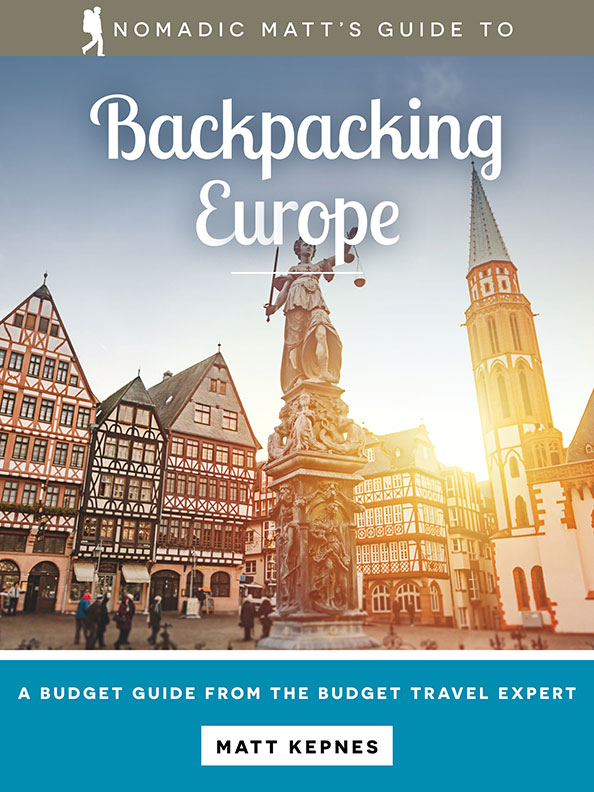
My detailed 200+ page guidebook is made for budget travelers like you! It cuts out the fluff found in other guides and gets straight to the practical information you need to travel while in Europe. It has suggested itineraries, budgets, ways to save money, on and off the beaten path things to see and do, non-touristy restaurants, markets, bars, safety tips, and much more! Click here to learn more and get your copy today.
Book Your Trip to Spain: Logistical Tips and Tricks
Book Your Flight
Use Skyscanner to find a cheap flight. They are my favorite search engine because they search websites and airlines around the globe so you always know no stone is left unturned.
Book Your Accommodation
You can book your hostel with Hostelworld as they have the biggest inventory and best deals. If you want to stay somewhere other than a hostel, use Booking.com as they consistently return the cheapest rates for guesthouses and cheap hotels. My favorite places to stay in Madrid are are:
Don’t Forget Travel Insurance
Travel insurance protects you against illness, injury, theft, and cancellations. It’s comprehensive protection in case anything goes wrong. I never go on a trip without it as I’ve had to use it many times in the past. My favorite companies that offer the best service and value are:
- SafetyWing (best for everyone)
- Insure My Trip (for those over 70)
- Medjet (for additional evacuation coverage)
Looking for the Best Companies to Save Money With?
Check out my resource page for the best companies to use when you travel. I list all the ones I use to save money when I’m on the road. They save you money when you travel too.
Want a Guide?
Madrid has some really interesting tours. My favorite company is Walks, which has expert guides and can get you behind the scenes of the city’s best attractions. It’s my go-to walking tour company!
Want More Information on Madrid?
Be sure to visit our robust destination guide on Madrid for even more planning tips!
